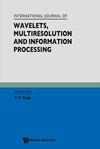Automatic SARS-CoV-2 Segmentation in Electron Microscopy Based on Few-shot Learning
IF 0.8
4区 计算机科学
Q4 COMPUTER SCIENCE, SOFTWARE ENGINEERING
International Journal of Wavelets Multiresolution and Information Processing
Pub Date : 2023-10-07
DOI:10.1142/s0219691323500479
引用次数: 0
Abstract
Due to the advantages of direct visualization and high resolution, transmission electron microscopy (TEM) technology has been widely used in the morphological identification of viruses. With the development of artificial intelligence (AI), there have been some studies on automated TEM virus identification using deep learning. However, to achieve effective virus identification results, a large number of high-quality labeled images are required for network training. In this work, we propose an automatic virus segmentation method based on few-shot learning. We use the Chikungunya virus, Parapoxvirus and Marburg virus, etc. to construct a pre-training virus dataset and train an attention U-Net-like network with an encoder module, relationship module, attention module and decoding module to realize severe acute respiratory syndrome coronavirus type 2 (SARS-CoV-2) segmentation using few-shot learning. The experiment shows that the proposed few-shot learning methods yield 0.900 Dice and 0.828 Jaccard in 1-shot, 0.903 Dice and 0.832 Jaccard in 5-shot, which demonstrates the effectiveness of our method and outperforms other promising methods. Our fully automated method contributes to the development of medical virology by providing virologists with a low-cost and accurate approach to identify SARS-CoV-2 in TEM.基于少镜头学习的SARS-CoV-2电子显微镜自动分割
透射电子显微镜(TEM)技术由于具有直观、分辨率高的优点,在病毒形态鉴定中得到了广泛的应用。随着人工智能(AI)的发展,利用深度学习技术进行TEM病毒自动识别的研究已经开始。然而,为了获得有效的病毒识别结果,需要大量高质量的标记图像进行网络训练。在这项工作中,我们提出了一种基于few-shot学习的病毒自动分割方法。我们利用基孔肯雅病毒、副痘病毒和马尔堡病毒等构建预训练病毒数据集,训练具有编码器模块、关系模块、注意力模块和解码模块的注意力u - net样网络,利用少次学习实现SARS-CoV-2的分割。实验表明,提出的少镜头学习方法在1次射击中产生0.900 Dice和0.828 Jaccard,在5次射击中产生0.903 Dice和0.832 Jaccard,证明了我们的方法的有效性,并且优于其他有前途的方法。我们的全自动方法为病毒学家提供了一种低成本、准确的方法来识别TEM中的SARS-CoV-2,有助于医学病毒学的发展。
本文章由计算机程序翻译,如有差异,请以英文原文为准。
求助全文
约1分钟内获得全文
求助全文
来源期刊
CiteScore
2.60
自引率
7.10%
发文量
52
审稿时长
2.7 months
期刊介绍:
International Journal of Wavelets, Multiresolution and Information Processing (hereafter referred to as IJWMIP) is a bi-monthly publication for theoretical and applied papers on the current state-of-the-art results of wavelet analysis, multiresolution and information processing.
Papers related to the IJWMIP theme are especially solicited, including theories, methodologies, algorithms and emerging applications. Topics of interest of the IJWMIP include, but are not limited to:
1. Wavelets:
Wavelets and operator theory
Frame and applications
Time-frequency analysis and applications
Sparse representation and approximation
Sampling theory and compressive sensing
Wavelet based algorithms and applications
2. Multiresolution:
Multiresolution analysis
Multiscale approximation
Multiresolution image processing and signal processing
Multiresolution representations
Deep learning and neural networks
Machine learning theory, algorithms and applications
High dimensional data analysis
3. Information Processing:
Data sciences
Big data and applications
Information theory
Information systems and technology
Information security
Information learning and processing
Artificial intelligence and pattern recognition
Image/signal processing.

 求助内容:
求助内容: 应助结果提醒方式:
应助结果提醒方式:


